High in the Himalayas and across the Tibetan Plateau, ancient monastery towns cling to mountainsides where the air grows thin, and prayer flags flutter against impossibly blue skies. These sacred settlements have endured for centuries at altitudes that would leave most visitors gasping, creating communities where spiritual devotion meets extreme geography. The monks and residents who call these places home have adapted to life where oxygen levels drop significantly, and weather conditions can shift from serene to savage within hours.
Here is a list of 17 Tibetan monastery towns that thrive at remarkable elevations, each offering a glimpse into a world where ancient traditions persist in some of Earth’s most challenging environments.
Rongbuk Monastery
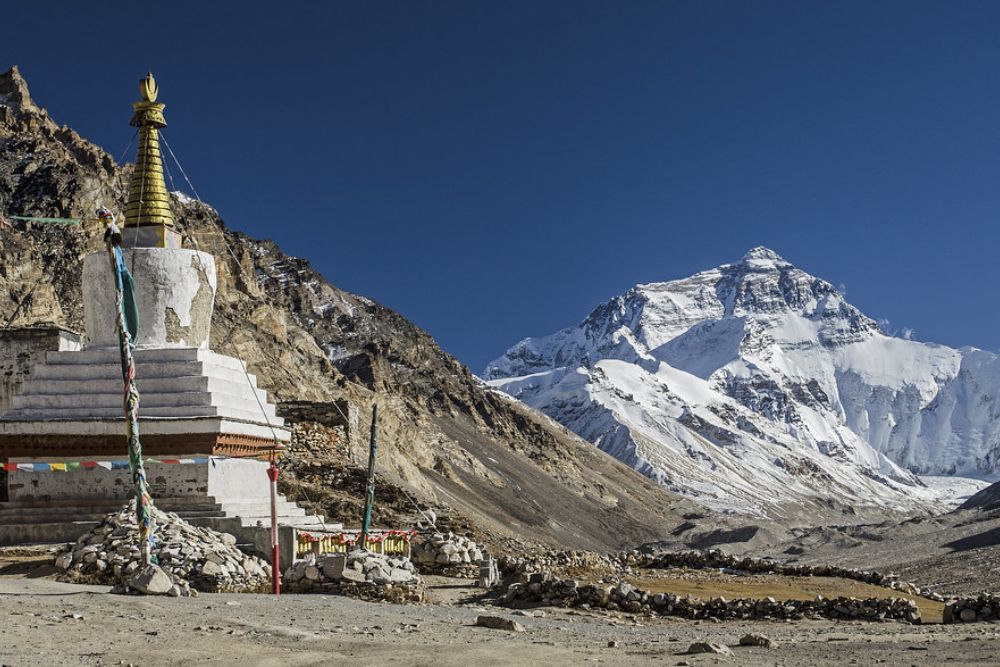
At 16,732 feet above sea level, Rongbuk Monastery holds the distinction of being the world’s highest religious site. The complex sits directly beneath Mount Everest’s north face, offering monks and visitors an unobstructed view of the planet’s tallest peak.
Founded in 1902, this Nyingma monastery once housed over 500 monks and nuns, though political upheavals reduced those numbers significantly. The journey to reach Rongbuk requires traversing winding mountain roads that climb steadily through landscapes so stark they seem borrowed from another planet.
Tashilhunpo Monastery
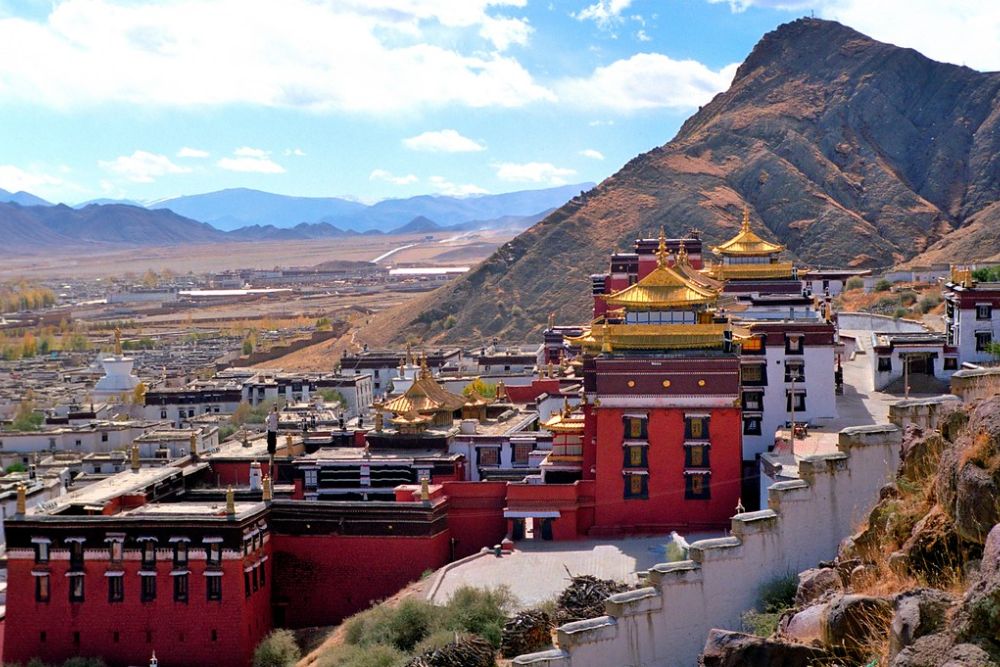
Perched at 12,600 feet in the city of Shigatse, Tashilhunpo Monastery serves as the traditional seat of the Panchen Lama, one of Tibetan Buddhism’s most important figures. The monastery’s golden roofs catch the intense high-altitude sunlight, creating a beacon visible for miles across the Yarlung Tsangpo valley.
Established in 1447, the complex houses a 90-foot-tall statue of the future Buddha Maitreya, crafted from gold and copper. The surrounding town has grown around the monastery over centuries, with traditional Tibetan homes spreading down the hillside like prayer beads on a string.
Like Travel Pug’s content? Follow us on MSN.
Samye Monastery
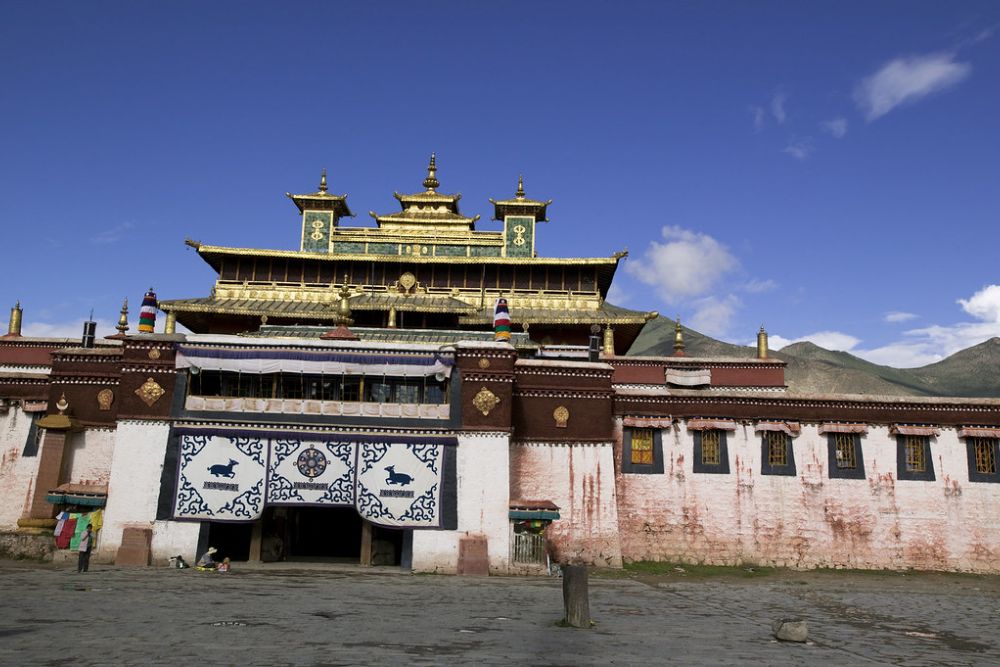
Tibet’s first Buddhist monastery sits at 11,680 feet in the Yarlung Valley, where legend claims demons once prevented construction until the great teacher Padmasambhava subdued them. Built-in the 8th century, Samye’s unique architectural design mirrors the Buddhist universe, with the central temple representing Mount Meru surrounded by smaller buildings symbolizing continents and oceans.
The thin air at this elevation makes even short walks between buildings a breathless affair for newcomers. Local pilgrims often arrive after walking for days across high mountain passes, their devotion undimmed by the altitude that challenges every breath.
Drepung Monastery

Once the world’s largest monastery, Drepung sprawls across a hillside at 12,300 feet outside Lhasa like a small city devoted entirely to Buddhist learning. At its peak, over 10,000 monks studied here, creating a community so large it needed its administrative systems and economic networks.
The white-painted buildings cascade down the mountainside in terraced levels, each housing different schools of Buddhist philosophy. The monastery’s location provides sweeping views of the Lhasa Valley, though the high altitude means visitors often need frequent rest stops while climbing between the various temple levels.
Sera Monastery

Famous for its daily debates where monks clap loudly while challenging each other’s Buddhist logic, Sera Monastery sits at 12,100 feet on the outskirts of Lhasa. The sound of these animated theological discussions echoes off the monastery walls, creating an atmosphere where intellectual rigor meets spiritual devotion.
Built in 1419, Sera once housed 5,000 monks who were divided into three colleges, each specializing in different aspects of Buddhist study. The altitude here affects visitors within minutes, yet the monks move through their daily routines with an ease that speaks to generations of high-altitude adaptation.
Like Travel Pug’s content? Follow us on MSN.
Ganden Monastery
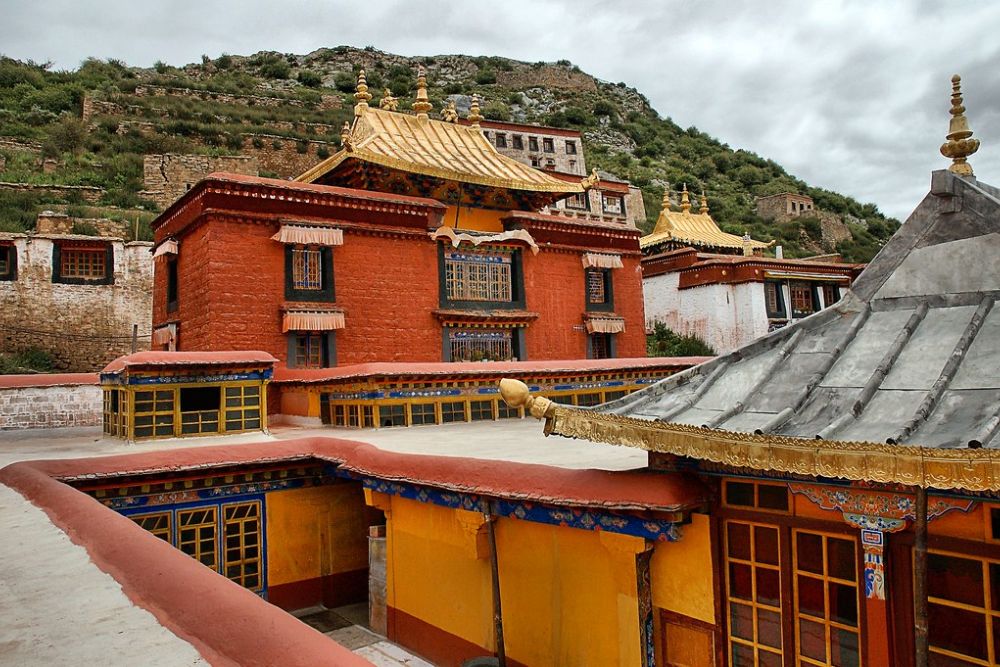
Established by Tsongkhapa himself, the founder of the Gelug school of Tibetan Buddhism, Ganden Monastery perches at 14,100 feet on Wangbur Mountain’s southern slope. The monastery’s name means ‘joyful place’ in Tibetan, though the harsh climate and extreme altitude create conditions that test human endurance daily.
Prayer flags strung between buildings snap in the constant wind that sweeps across these heights while the view extends across valleys that seem to stretch endlessly toward distant snow-capped peaks. Pilgrims often complete the kora (circumambulation) around the monastery despite the thin air that makes each step a conscious effort.
Mindroling Monastery
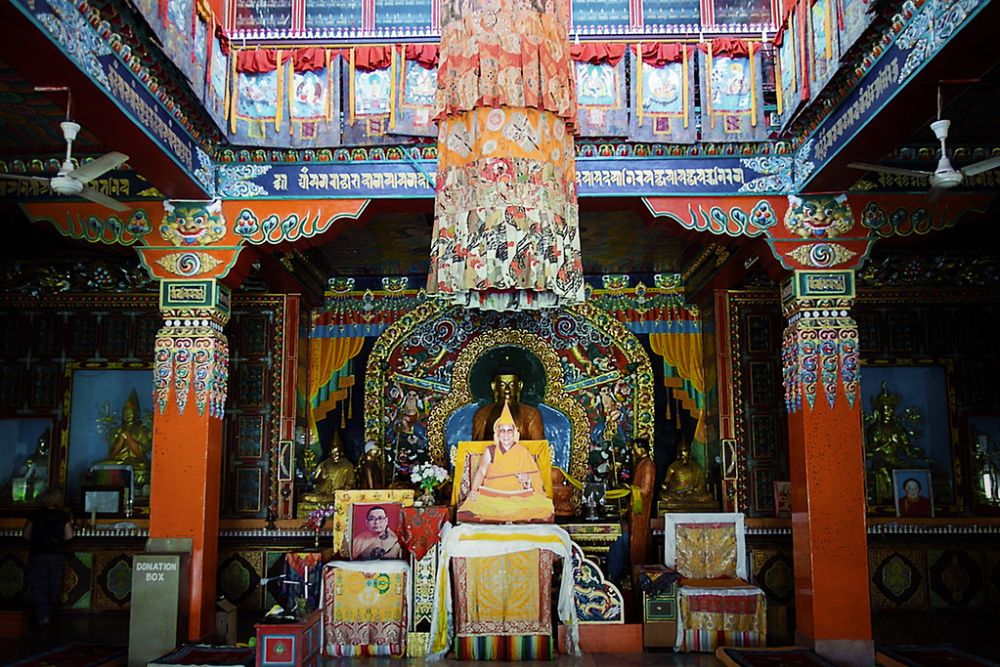
At 11,800 feet in the Dranang Valley, Mindroling Monastery stands as one of the six main Nyingma monasteries, surrounded by landscapes that shift dramatically with the seasons. The complex houses an impressive library of ancient texts, many hand-copied by generations of monks who worked by lamplight in the thin mountain air.
During winter months, temperatures can plummet to minus 20 degrees Fahrenheit, yet the monastery’s activities continue with a rhythm established over centuries. The surrounding village has adapted to these extreme conditions, with homes built from local stone and designed to maximize solar heat gain during the brief mountain summers.
Sakya Monastery
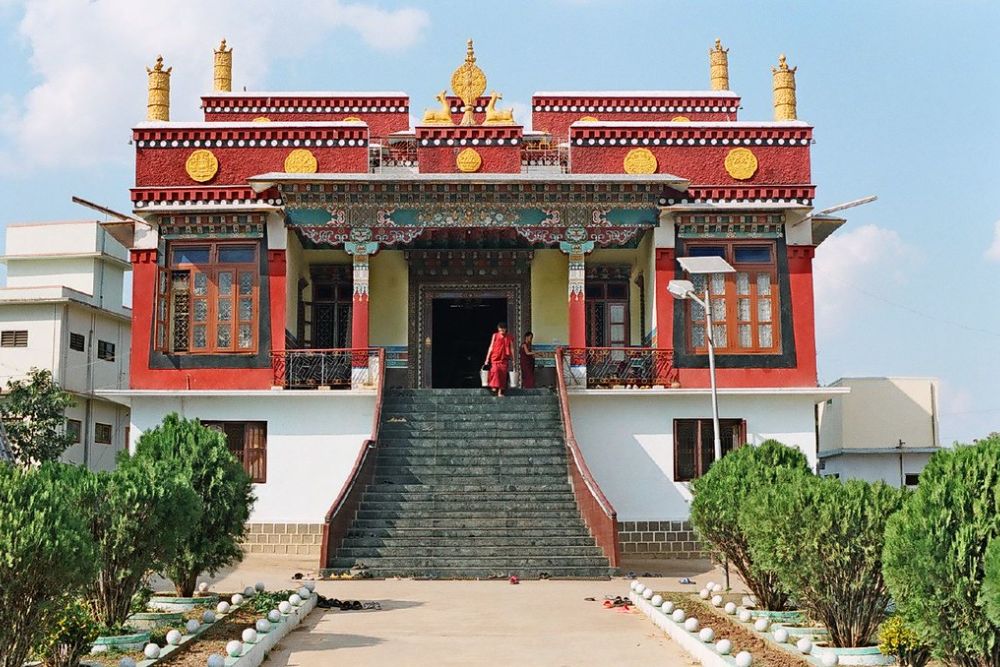
The distinctive gray walls of Sakya Monastery rise at 13,780 feet, creating a fortress-like appearance that reflects both spiritual purpose and practical defense against the harsh elements. Founded in 1073, this monastery became the seat of Tibet’s first major political dynasty, proving that high-altitude locations could serve as centers of both religious and secular power.
The monastery’s unique Mongol-influenced architecture sets it apart from other Tibetan religious sites, with massive walls designed to withstand the fierce winds that regularly sweep across these heights. Inside, priceless manuscripts and artifacts have survived centuries of political upheaval, preserved partly by the dry, thin air that characterizes these elevations.
Like Travel Pug’s content? Follow us on MSN.
Tashigang Monastery
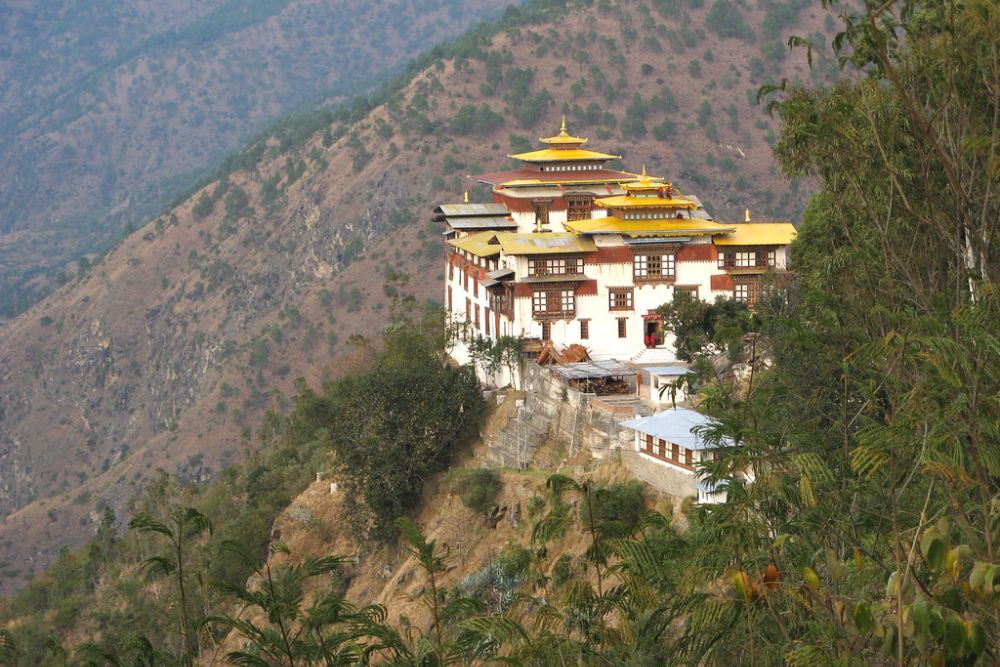
Nestled at 13,450 feet in a remote valley accessible only by mountain paths, Tashigang Monastery embodies the isolation that many high-altitude religious communities deliberately sought. The journey to reach this monastery requires crossing several mountain passes where altitude sickness can strike suddenly and severely.
Local legends claim the site was chosen because eagles regularly circle overhead, which is considered an auspicious sign in Tibetan culture. The handful of monks who maintain this remote outpost lead lives of remarkable self-sufficiency, growing barley in terraced fields that represent some of the world’s highest-altitude agriculture.
Rongbuk Nunnery
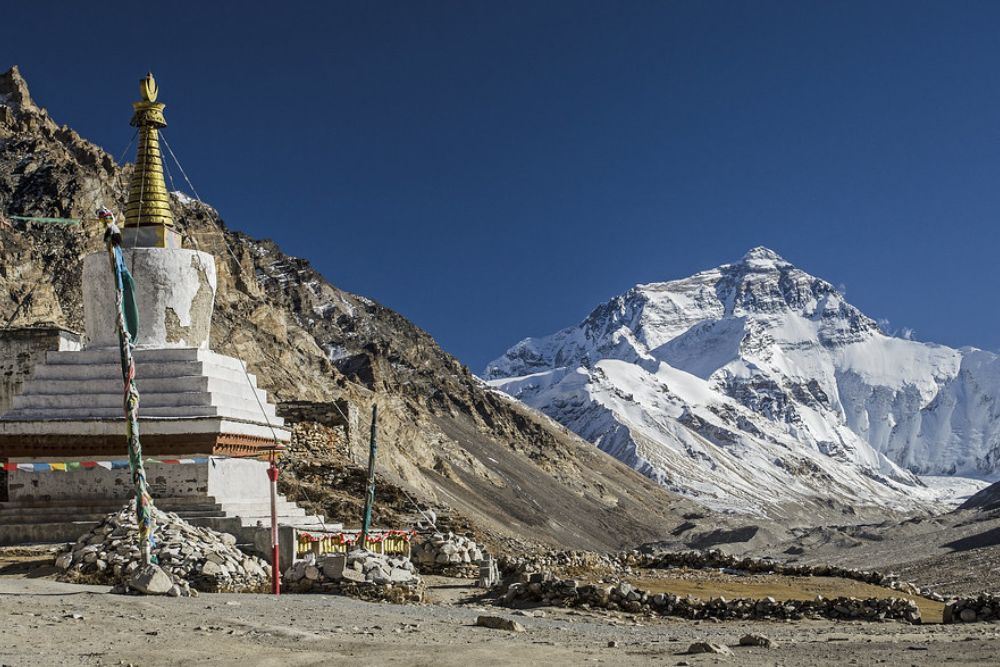
Just below the famous Rongbuk Monastery, this nunnery at 16,400 feet houses Buddhist nuns who have chosen to dedicate their lives to spiritual practice in one of Earth’s most extreme environments. The nuns here maintain vegetable gardens in greenhouses that protect crops from the intense ultraviolet radiation and sudden weather changes common at this altitude.
Their daily routines include meditation sessions that begin before dawn when temperatures often drop well below freezing, even during summer months. The nunnery’s location offers an unparalleled view of Everest’s north face, creating a natural cathedral where spiritual practice meets geological grandeur.
Palcho Monastery
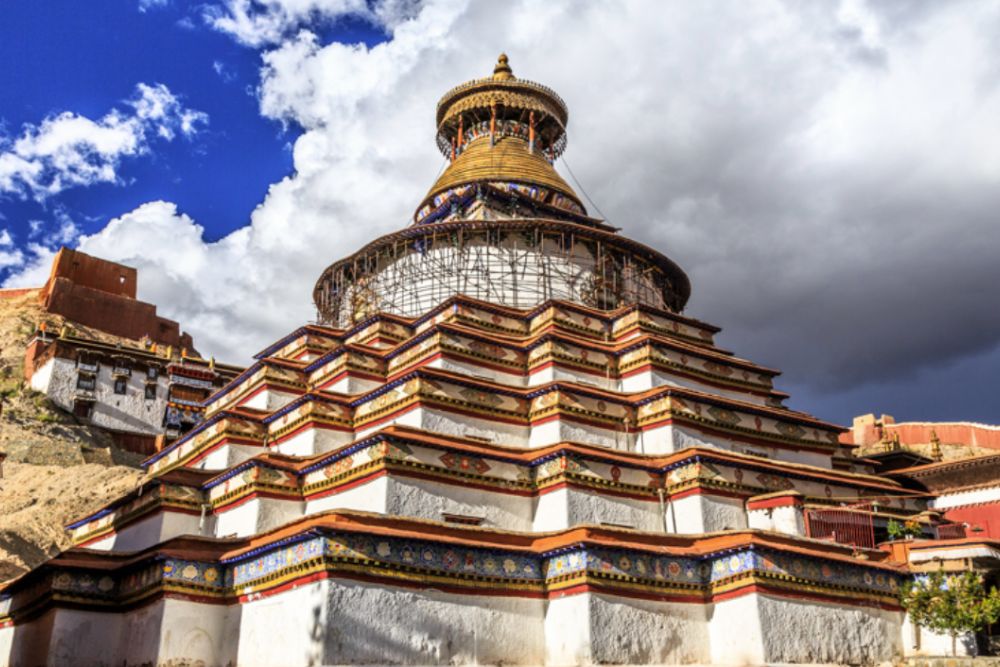
At 13,123 feet in Gyantse, Palcho Monastery features the remarkable Kumbum stupa, a nine-story structure containing 108 chapels decorated with thousands of murals and statues. The monastery’s unique architecture reflects influences from multiple Buddhist schools, created during a period when religious tolerance flourished despite the challenges of high-altitude construction.
The surrounding town of Gyantse has adapted to life at this elevation over centuries, with traditional methods for preserving food and fuel that account for the thin air’s effects on combustion and cooking. Visitors often experience headaches and shortness of breath within hours of arrival, yet the local community goes about daily life with energy levels that seem impossible at such heights.
Like Travel Pug’s content? Follow us on MSN.
Ngor Monastery
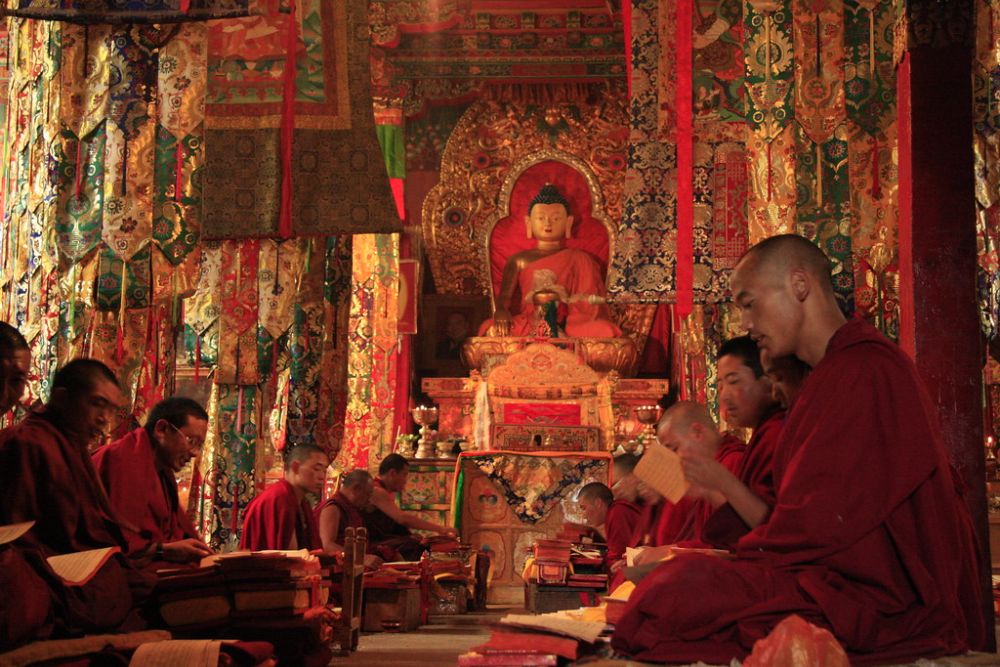
Founded in 1429 at 12,890 feet, Ngor Monastery became a major center for the Sakya school of Buddhism, attracting scholars from across the Tibetan world despite its remote, high-altitude location. The monastery’s library contains texts on subjects ranging from astronomy to medicine, fields of study that took on particular importance in environments where weather prediction and altitude-related health issues could mean the difference between life and death.
The complex includes meditation retreats built into natural caves, where practitioners would spend months or even years in solitude at elevations that challenge basic survival. The monastery’s influence spread far beyond its mountain location, establishing branch monasteries across Tibet and Mongolia.
Shalu Monastery

At 12,500 feet near Shigatse, Shalu Monastery combines Tibetan and Chinese architectural elements in a unique style that reflects the cultural exchanges possible even in high-altitude isolation. The monastery became famous for its advanced astronomical studies, with monks developing calendars and mathematical systems while working in conditions where mental clarity could be affected by oxygen deprivation.
The complex includes hot springs that provide welcome relief from the harsh mountain climate, creating a natural gathering place where religious discussion can continue in relative comfort. The monastery’s location in a sheltered valley provides some protection from the fierce winds that regularly batter more exposed high-altitude sites.
Drigung Til Monastery
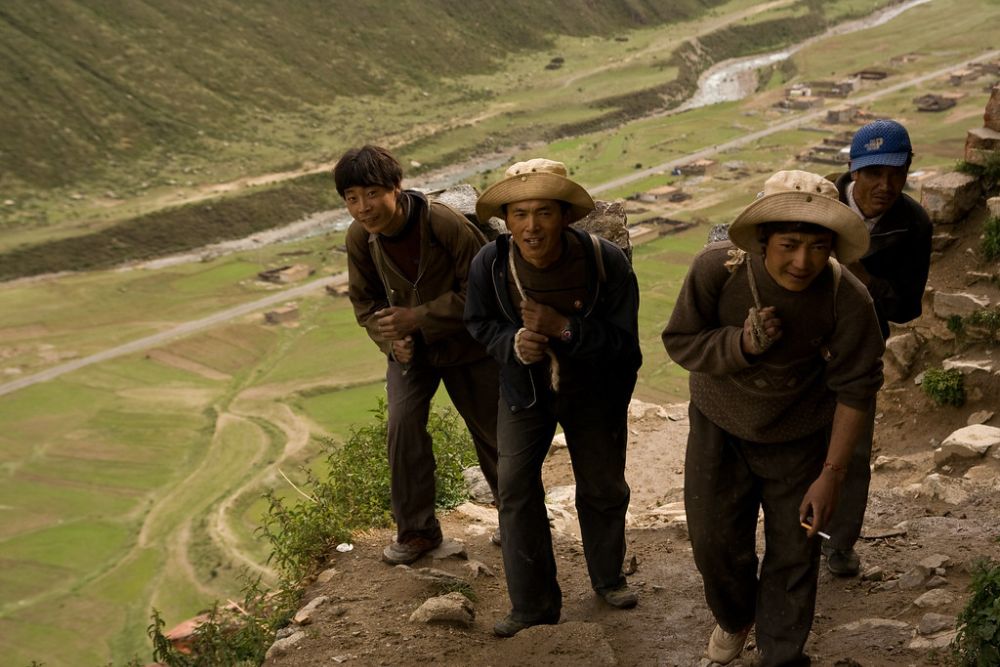
Perched at 14,800 feet on a ridge that offers panoramic views of snow-capped peaks, Drigung Til Monastery serves as the main seat of the Drigung Kagyu School of Buddhism. The monastery’s location was chosen partly for its suitability as a sky burial site, where bodies are offered to vultures in accordance with Tibetan tradition—a practice that takes on particular significance at altitudes where the thin air affects decomposition.
The complex includes meditation caves carved directly into the mountainside, creating retreat spaces where practitioners could experience complete isolation while surrounded by some of the world’s most dramatic landscapes. The monastery’s workshops produce traditional crafts using techniques adapted to work effectively in a low-oxygen environment.
Like Travel Pug’s content? Follow us on MSN.
Tsurphu Monastery
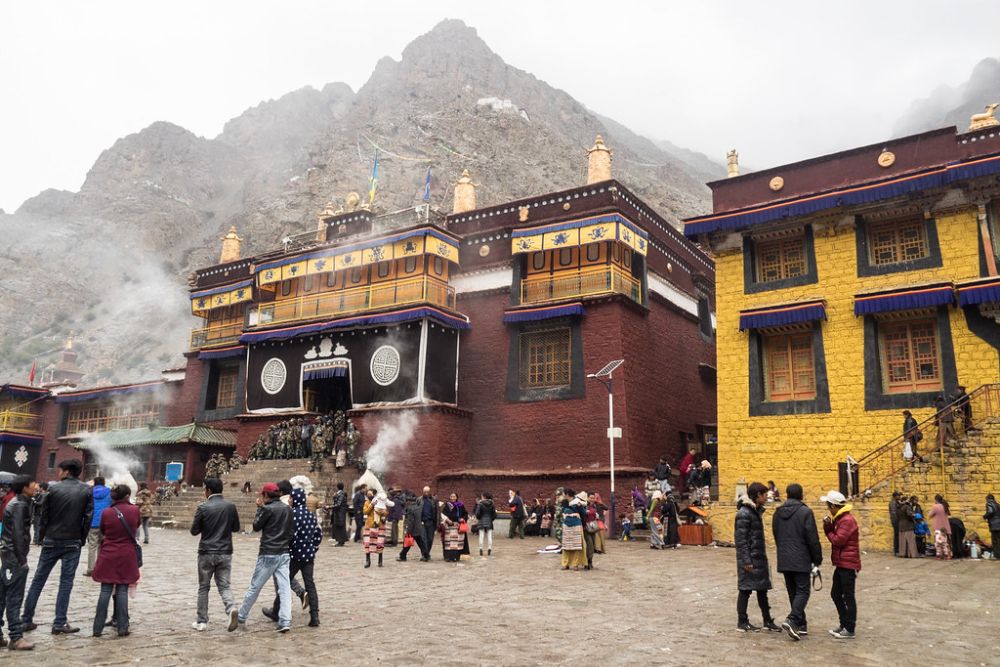
At 14,100 feet in the Tolung valley, Tsurphu Monastery holds special significance as the traditional seat of the Karmapa, one of Tibetan Buddhism’s most important reincarnate lamas. The monastery’s hot springs provide a welcome respite from the altitude’s effects, creating therapeutic pools where monks and visitors can recover from the physical stress of high-elevation living.
The complex includes traditional printing facilities where religious texts are produced using wooden blocks, a process that requires particular skill at altitudes where both the printer’s stamina and the materials’ behavior are affected by atmospheric conditions. The surrounding landscape changes dramatically with elevation, creating distinct ecological zones visible from the monastery’s various levels.
Ralung Monastery
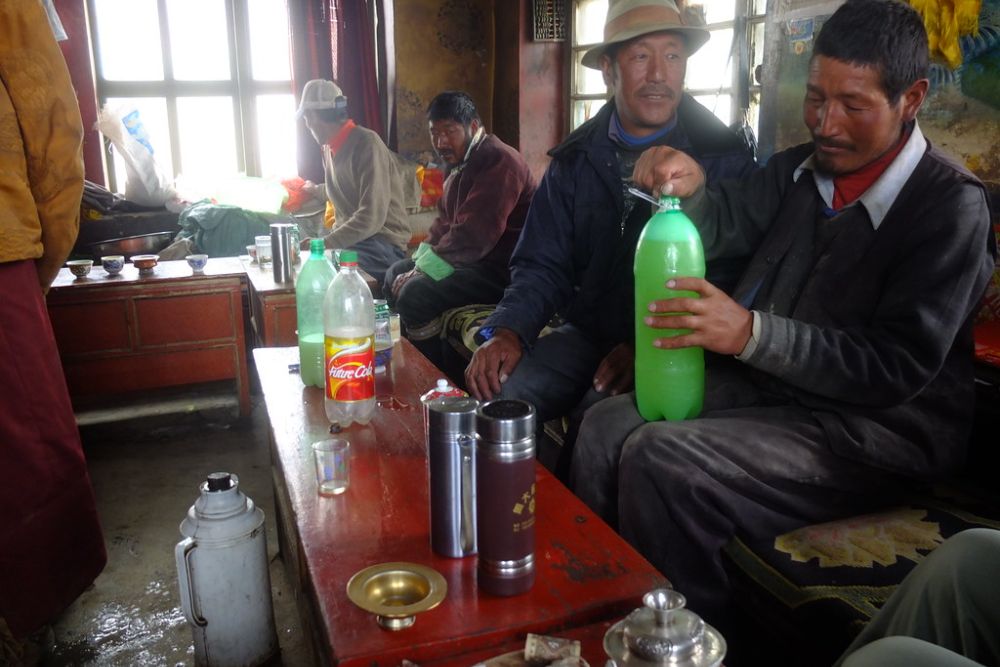
Founded at 13,200 feet by Tsangpa Gyare, who established the Drukpa Kagyu school after seeing nine dragons fly into the sky from this location, Ralung Monastery embodies the mystical traditions associated with high-altitude spiritual sites. The monastery’s position in a narrow valley creates a microclimate where weather conditions can change rapidly, with morning sunshine giving way to afternoon snowstorms regardless of season.
The complex includes traditional workshops where monks create religious art and ceremonial objects, working with materials and techniques that have been adapted over centuries to function effectively in the thin mountain air. The monastery’s influence extended throughout the Himalayan region, establishing a network of high-altitude religious communities.
Tashiding Monastery
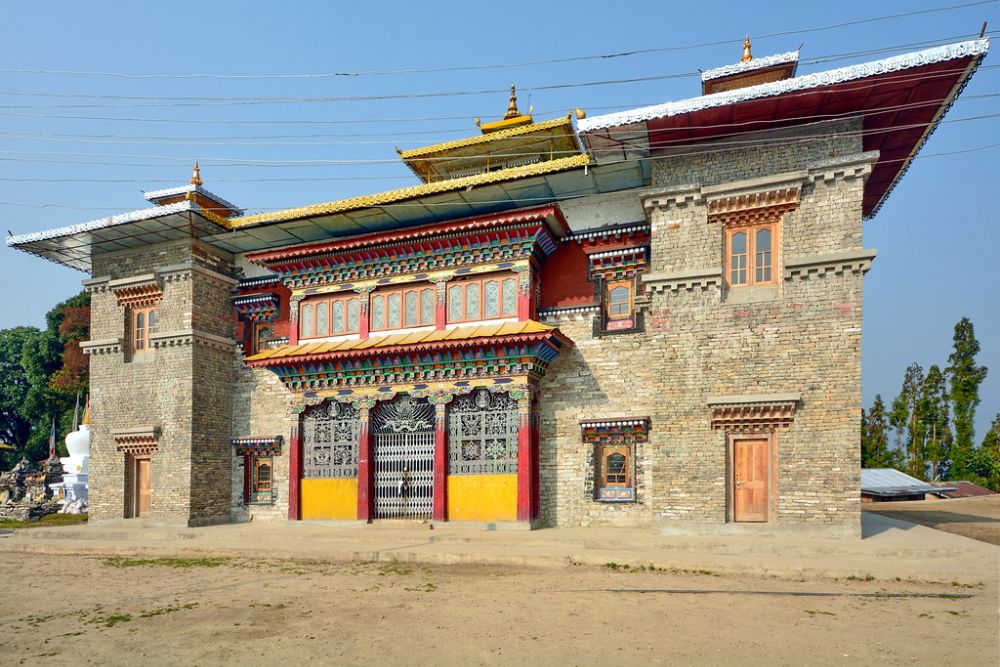
At 11,900 feet in Sikkim, Tashiding Monastery sits atop a conical hill surrounded by the confluence of two rivers, creating a naturally isolated environment perfect for contemplative practice. The monastery’s annual sacred water festival draws pilgrims who believe the blessed water can cleanse negative karma, with devotees traveling for days through high mountain passes to participate.
The complex includes ancient chortens (stupas) that predate the monastery itself, suggesting this high-altitude location has held religious significance for over a millennium. The monastery’s gardens include medicinal plants that grow naturally at this elevation, creating a traditional pharmacy where altitude-related ailments can be treated using local resources.
Like Travel Pug’s content? Follow us on MSN.
Hemis Monastery
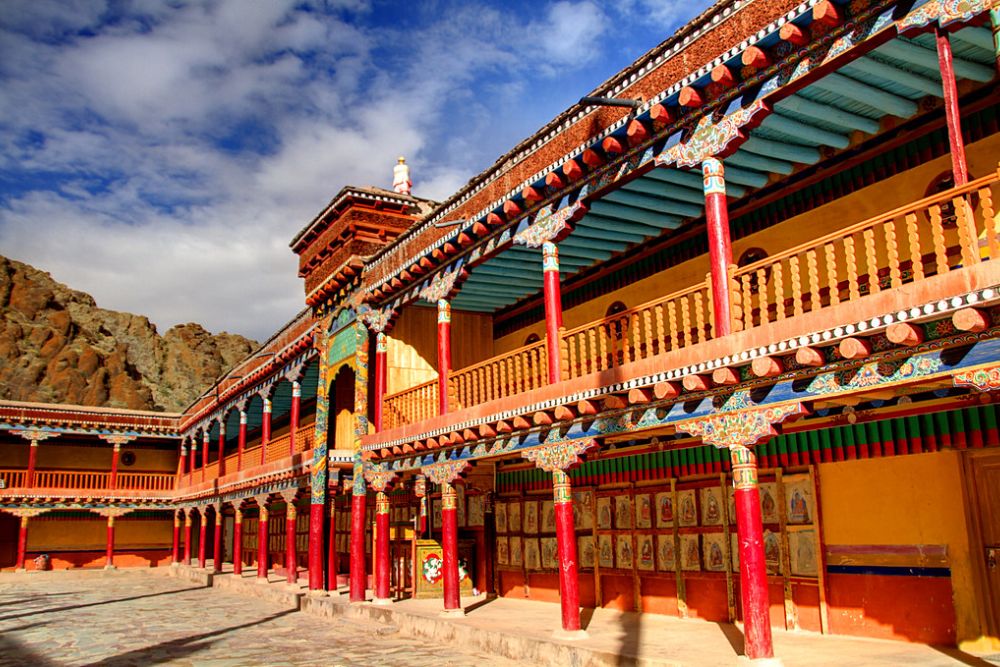
Situated at 11,500 feet in Ladakh’s Indus Valley, Hemis Monastery houses one of the largest collections of ancient Buddhist artifacts in the region, preserved by the dry mountain air and extreme temperature variations that characterize high-altitude environments. The monastery’s annual festival features masked dances performed in the courtyard, with participants wearing elaborate costumes despite the thin air that makes even moderate physical exertion challenging.
The complex includes traditional living quarters where monks adapt to seasonal temperature swings that can exceed 100 degrees Fahrenheit between winter and summer extremes. The monastery’s location provides stunning views of barren mountains that stretch toward the horizon in waves of brown and gold, punctuated by the intense blue of high-altitude skies.
Where Earth Meets Heaven
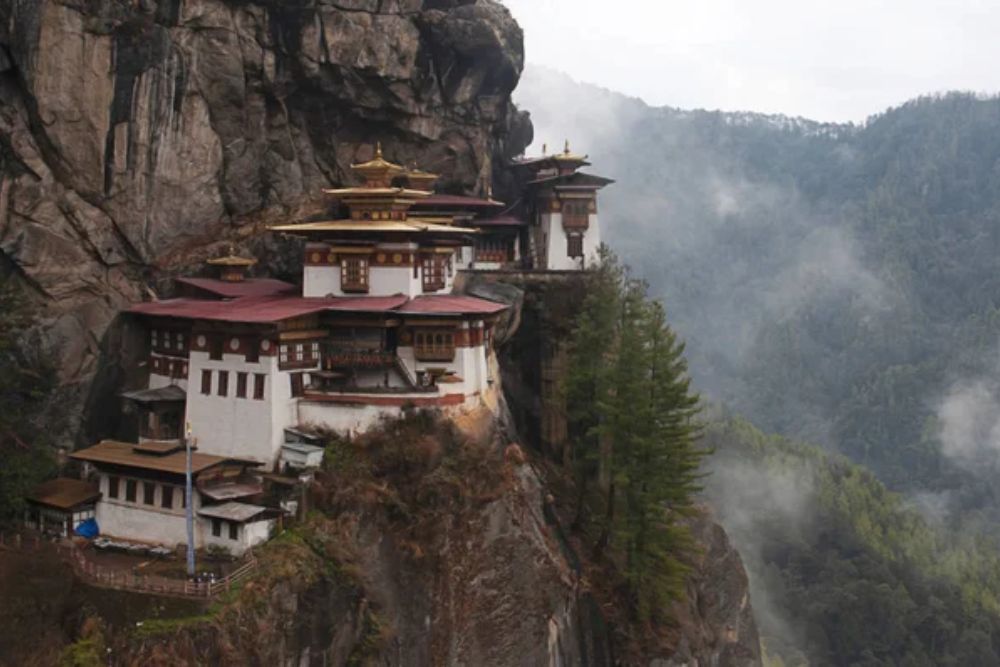
These monastery towns represent more than religious sites—they embody humanity’s remarkable ability to create thriving communities in environments that push the boundaries of survival. The monks and residents who call these high-altitude places home have developed physical and cultural adaptations that allow not just survival but genuine flourishing in conditions that would quickly overwhelm most visitors.
Their continued existence proves that spiritual devotion can indeed move mountains or at least inspire people to build lasting communities on top of them.
More from Travel Pug

- 20 Best Beach Towns in the Carolinas
- 13 Destinations Where Tourists Regularly Regret Their Trip
- 20 Things You Actually Get in First Class
- 20 Small Airports With Aviation Museums
- 20 Places in the U.S. That Are Perfect for a Reset Trip
Like Travel Pug’s content? Follow us on MSN.
